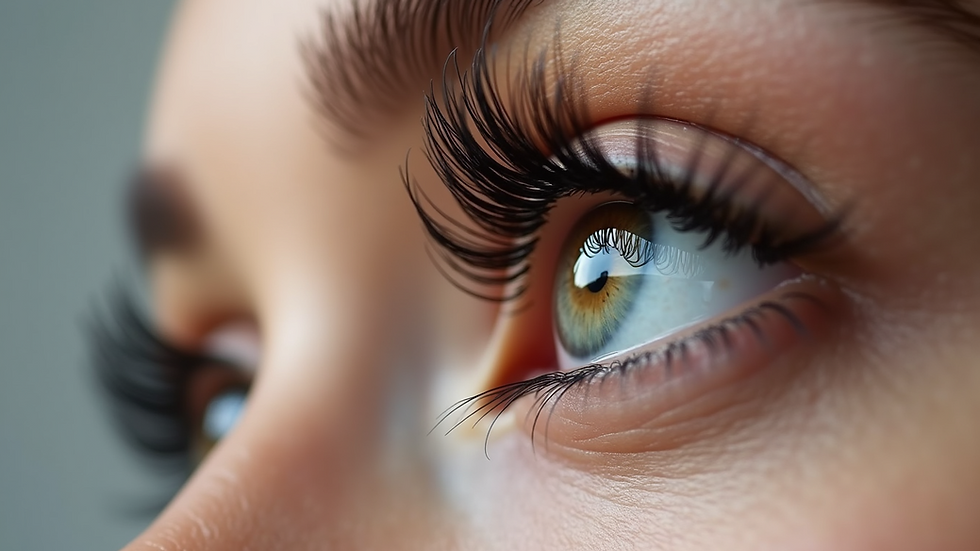Everything You Need To Know About Tattoo removal in London
- browboutiqueuk
- Jun 5, 2021
- 3 min read
In evolving London, having a tattoo is a must, and not only teenagers but also the aged people who admire tattoo culture have to tattoo. Almost 30% of people age 20-35 years has a tattoo. A tattoo is something considered permanent. So people decide which tattoo to get very carefully; however, not every time a tattoo looks how they want it to look. So here comes the professional who removes them. Yes! Tattoo removal in London does exist, and there are plenty of clinics and professionals who do it marvelously. A simple one-inch tattoo to remove takes up to £35-£70 per session.
Types of tattoo removal procedures
Tattoo removal by surgery
Throughout surgical removal, the skin is numbed with an injection of an anesthetic. The tattoo is eliminated with a scalpel, and the edges of the skin are stitched back together. After the treatment, antibacterial lotion assists promote recovery. Surgical tattoo elimination is practical, yet it leaves a mark and might be functional just for small tattoos.
Dermabrasion
Throughout dermabrasion, the tattooed location is typically chilled till numb. Then tattooed skin is sanded down to much more profound levels with a high-speed rotary device with a rough wheel or brush. Due to this the ink of the tattoo seeps out of the skin. The affected skin feels sore for many days. It takes couple of days to heal back.
Tattoo removal by laser
Before laser therapy, the skin is numbed with an injection of an anesthetic. Afterward, a powerful pulse of power is connected to the tattoo to warm and finish the tattoo ink. Different tinted tattoos might call for treatment with many lasers and other wavelengths. After the procedure, you can find swelling as well as also perhaps blistering or hemorrhaging. An antibacterial ointment can help speedy healing. You'll likely need multiple sessions to lighten the tattoo, and likewise, it might not be viable to eliminate the tattoo.
Laser treatment is more preferred as Laser treatment can use it to remove a small or big tattoo.
How to prepare for the removal
It is asked that you are freshly showered or have taken a proper bath with clean skin, without creams, oils, or scents of any kind before can be found in. Avoid straight sun exposure to the treatment place and do not make use of UV tanning beds in all for four weeks before treatment. The use of self-tanning skin treatment items has to be stopped two weeks before treatment. Do not use any topical products that develop photosensitivity in the treatment locations for three days before treatment. If you have received any medical spa options in the treatment location, such as Botox, facial fillers, laser, or health spa services, please contact your medical expert before the treatment.
What to expect after treatment (If had laser treatment)
Erythema (soreness), edema (swelling), scabbing, flaking, irritation, or blistering in therapy locations will most likely occur. This might persist for many days. White-gray staining of the therapy area may appear right away following therapy and last for a few minutes to a couple of days. Your tattoo might darken, lighten, discolor or perhaps appear to have no change immediately post-treatment. On average, it takes 4-12 weeks for your body to process the tattoo's pigment. Tattoo elimination functions by removing the stain in the tattoo through the body's lymphatic system; thus, treatment results will certainly not be visibly apparent for 8-12 weeks.
Precautions to take after the treatment
Physical exercise (aerobics, sporting activities) ought to be ceased for 1 to 2 days. Rough physical activities (playing football) need to be stopped for ten days after therapy. Do not immerse the therapy location in water for the first three weeks post-procedure or until the skin heals. This consists of bathtubs, Jacuzzis, a pool, lakes, the ocean, and so on. If the tattoo is on a lower part of the body, keep the leg boosted to boost blood circulation, motivating the healing procedure. Return to your clinical professional in 8-12 weeks for evaluation.




Tattoo removal in London has become increasingly popular, with advanced laser technology making the process safer and more effective. Whether it’s due to a change in personal style or professional reasons, many individuals seek tattoo removal services to erase unwanted ink. The procedure typically involves multiple sessions, depending on the size, color, and depth of the tattoo. Clinics in London offer state-of-the-art treatments that minimize scarring and discomfort, ensuring a smooth removal process.
While tattoo removal is a specialized field, students researching this topic may require academic assistance in writing essays or reports. Platforms like **MyAssignmentHelp** provide expert guidance for those needing well-researched content. If you're short on time and need high-quality writing, you can even **pay for essay** services…
What are common mistakes to avoid in an essay outline?
Common mistakes in an essay outline include lack of structure, vague thesis statements, missing key points, excessive detail, and failure to organize ideas logically, leading to a disorganized final essay. Creating a well-structured essay outline is essential for organizing ideas and maintaining a clear flow in writing. Many students struggle with structuring their outlines effectively. BookMyEssay provides expert Essay Outline Writing Help, ensuring students develop logical, well-organized outlines for essays. Their professionals assist in crafting clear thesis statements, organizing main points, and maintaining coherence. With BookMyEssay, students receive step-by-step guidance, avoiding common mistakes and improving writing efficiency. Their services ensure plagiarism-free, high-quality assistance tailored to academic standards. With expert support,…